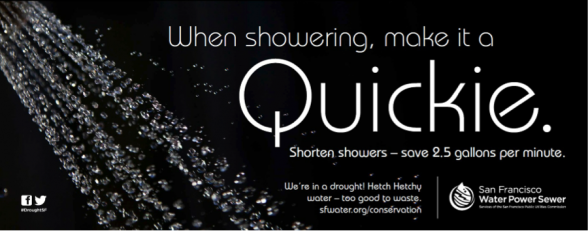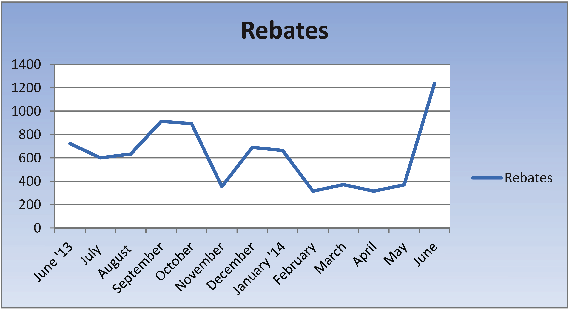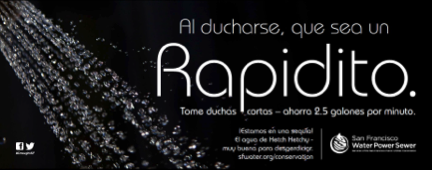Water Conservation Can Be Smart AND Sexy

Who will you meet?
Cities are innovating, companies are pivoting, and start-ups are growing. Like you, every urban practitioner has a remarkable story of insight and challenge from the past year.
Meet these peers and discuss the future of cities in the new Meeting of the Minds Executive Cohort Program. Replace boring virtual summits with facilitated, online, small-group discussions where you can make real connections with extraordinary, like-minded people.
Civic Innovation Spotlight
Meeting of the Minds is working with the San Francisco Mayor’s Office of Civic Innovation (MOCI) to bring you the Civic Innovation Spotlight, a monthly feature that shares the stories of cutting-edge and innovative civic projects in San Francisco. This series shares the untold stories of government innovation and inspiration related to accessibility, education, health, energy, and public services in San Francisco. For more articles in the Civic Innovation Spotlight, click here.
On January 31, 2014, the SFPUC asked its customers to voluntarily curtail water consumption by 10%. To facilitate achieving this goal, the SFPUC Communications Division developed and launched a multi-lingual and edgy public education campaign that successfully promoted water conservation through behavioral changes and plumbing upgrades for residents and businesses.
With 2013 being the driest year on record in California and no relief in sight, the San Francisco Public Utilities Commission (SFPUC) in January 2014 asked its customers to voluntarily reduce their water use by 10%.
We’re proud that the 2.6 million people that rely on our Hetch Hetchy Regional Water System carry a strong conservation and environmental ethos. In San Francisco, residents use a miserly 49 gallons per person per day, one of the lowest in entire state, and 50% of the national average. These low use numbers, however, make achieving additional water savings even more challenging.

Thanks to conservation efforts by our retail and wholesale customers, system-wide water use has decreased by 17% even though population has increased by 4% in the past decade.
We needed a creative campaign that would provoke thought, encourage conversation, and inspire immediate action. In June 2014, the SFPUC Communications Division launched the “Water Conservation is Smart and Sexy” campaign that was featured on television, newspapers, buses, outdoor billboards and online.

The double entendré “Quickie” captures attention; then the reader sees the ad is promoting shorter showers.

Monochromatic colors, simple fonts, and teasing placement of photographs strike a sharp contrast to loud and blaring advertisements screaming for people’s attention.
The summer campaign from June-August had 3 goals:
- Increased utilization of water conservation programs and rebates;
- Consistent behavioral change; and,
- Increased awareness of the drought and region’s water supply.
Commercial featured on TV and Youtube. The SFPUC developed the concept, script, and even provided the voice over talent! Credit to the City’s SFGov TV team for the video shoot and production.

Customer rebate applications for high-efficiency toilets and appliances surged during the first month of the campaign. June 2014 saw a 334% jump over May.
How did we do? Thanks to our campaign we’ve exceeded our 10% conservation goal!

The dotted line represents the 10% conservation baseline and the red line indicates customer use. Since June, our customers have exceeded the 10% goal and made up for the earlier part of the year. Thanks to San Francisco Mayor Ed Lee’s executive directive, even San Francisco city departments have reduced their water use by 16%.
Conservation and drought preparedness are not “quickies” and are the new normal in California. If we are not vigilant and consistent with our education, even the savings we gained this summer can quickly evaporate. Our reduced demand and wiser water use is here to stay.
As public agencies, we need to be even more innovative and unafraid to take chances. Our messages to protect and enhance our public safety, health, education, environment, and economy are some of the most important ones the public should pay attention to. I think the success of the “Water is Sexy and Smart Campaign” is a turning point and hopefully challenges others to think outside the box.
By harnessing the creative talent and innovation of your team, we have dared to create provocative campaigns that will capture the interest of our audience.
I promise by “Doing It” you’ll be amazingly “Satisfied” with the results.

The campaigns also ran in Spanish and Chinese to reach San Francisco’s diverse communities.
Discussion
Leave your comment below, or reply to others.
Please note that this comment section is for thoughtful, on-topic discussions. Admin approval is required for all comments. Your comment may be edited if it contains grammatical errors. Low effort, self-promotional, or impolite comments will be deleted.
Read more from MeetingoftheMinds.org
Spotlighting innovations in urban sustainability and connected technology
Middle-Mile Networks: The Middleman of Internet Connectivity
The development of public, open-access middle mile infrastructure can expand internet networks closer to unserved and underserved communities while offering equal opportunity for ISPs to link cost effectively to last mile infrastructure. This strategy would connect more Americans to high-speed internet while also driving down prices by increasing competition among local ISPs.
In addition to potentially helping narrow the digital divide, middle mile infrastructure would also provide backup options for networks if one connection pathway fails, and it would help support regional economic development by connecting businesses.
Wildfire Risk Reduction: Connecting the Dots
One of the most visceral manifestations of the combined problems of urbanization and climate change are the enormous wildfires that engulf areas of the American West. Fire behavior itself is now changing. Over 120 years of well-intentioned fire suppression have created huge reserves of fuel which, when combined with warmer temperatures and drought-dried landscapes, create unstoppable fires that spread with extreme speed, jump fire-breaks, level entire towns, take lives and destroy hundreds of thousands of acres, even in landscapes that are conditioned to employ fire as part of their reproductive cycle.
ARISE-US recently held a very successful symposium, “Wildfire Risk Reduction – Connecting the Dots” for wildfire stakeholders – insurers, US Forest Service, engineers, fire awareness NGOs and others – to discuss the issues and their possible solutions. This article sets out some of the major points to emerge.
Innovating Our Way Out of Crisis
Whether deep freezes in Texas, wildfires in California, hurricanes along the Gulf Coast, or any other calamity, our innovations today will build the reliable, resilient, equitable, and prosperous grid tomorrow. Innovation, in short, combines the dream of what’s possible with the pragmatism of what’s practical. That’s the big-idea, hard-reality approach that helped transform Texas into the world’s energy powerhouse — from oil and gas to zero-emissions wind, sun, and, soon, geothermal.
It’s time to make the production and consumption of energy faster, smarter, cleaner, more resilient, and more efficient. Business leaders, political leaders, the energy sector, and savvy citizens have the power to put investment and practices in place that support a robust energy innovation ecosystem. So, saddle up.








0 Comments